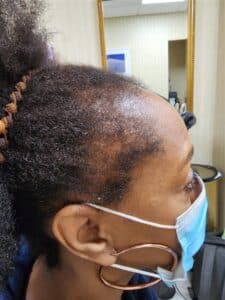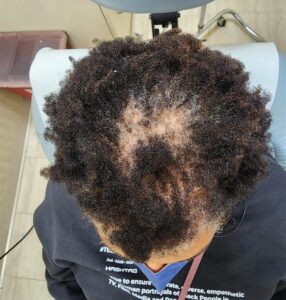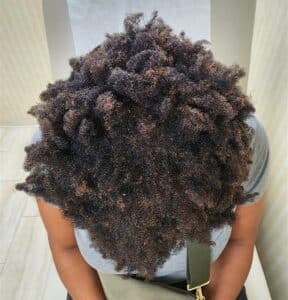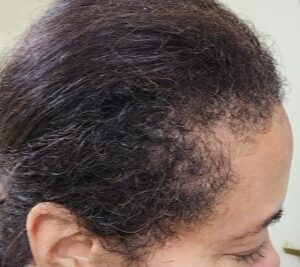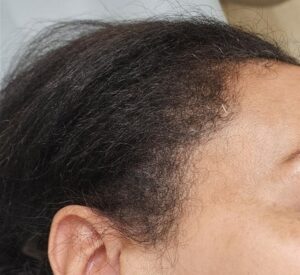Case Details
Traction Alopecia Reversal – Before and After
What is Traction Alopecia?
Traction alopecia is a type of hair loss caused by repeated pulling or tension on the hair follicles. Over time, this constant strain damages the follicles. This can lead to thinning or bald patches—often along the hairline, temples, or areas where hair is pulled tightly.
Causes and Who Gets It
This condition is common among people who frequently wear tight hairstyles such as braids, weaves, ponytails, buns, or locs. It can affect individuals of all backgrounds but is especially prevalent in women of African descent due to certain hair styling practices.
Conditions That Can Look Similar
Several other conditions can mimic traction alopecia. Androgenetic alopecia causes diffuse thinning and is genetic, while alopecia areata can result in patchy hair loss, including a pattern known as ophiasis that affects the edges of the scalp. A careful medical evaluation is essential to make the correct diagnosis.
Prognosis and Treatment
If detected early, traction alopecia can often be reversed because the follicles may still be active. Once scarring develops, hair loss can become permanent. Treatment options include changing styling practices, using topical or oral medications to stimulate regrowth, and—in more advanced cases—procedures such as corticosteroid injections or hair transplantation.
Your Next Step
If you notice thinning along your hairline or scalp irritation from styling, don’t wait. Early intervention is key. Contact Aglow Dermatology today for a professional diagnosis and customized treatment plan to help you protect and restore your hair.
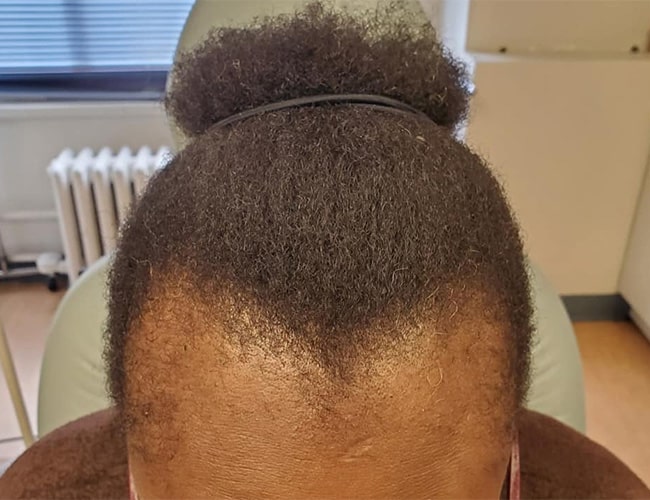
Before
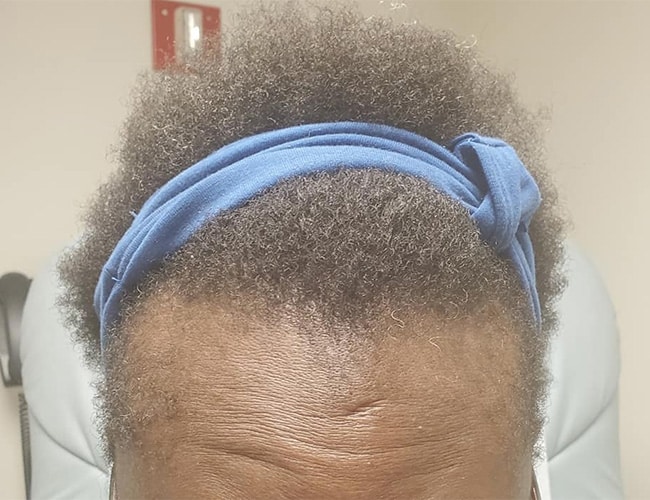
After
Description: This woman in her 50s experienced thinning along her hairline from years of tight hairstyles. She was treated medically—without injections or surgery—by addressing inflammation, supporting hair growth, and modifying styling habits. As her before-and-after photos show, traction alopecia reversal is possible when treated promptly and correctly.


